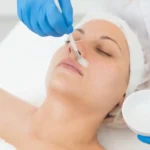THE WHAT? LVMH is joining forces with UNESCO at the IUCN World Conservation Congress in Marseille from September 3-11 to present its shared commitments to protecting biodiversity within the scope of the Man and Biosphere (MAB) program.
THE DETAILS Unesco, LVMH and their maisons will come together to host a pavilion where they will detail their ‘convictions and concrete actions’ to protect biodiversity.
LVMH is the only private sector party of the scientific program, which according to a press release, “offers a framework for international cooperation.”
In addition, LVMH is working on a rollout of regenerative agriculture programs for strategic agricultural raw materials including grapes, cotton, wool and leather, which will take place from now until 2030. The company is also contributing to collective efforts to regenerate ecosystems and protect endangered animal and plant species.
THE WHY? The collaboration aims to establish best practices for sustainable development to help achieve the UN Sustainable Development Goals, which is said to align with LVMH’s aim to conceive a new vision of luxury anchored in an alliance between nature and creativity.
Aesthetic medicine products are developed and regulated to meet stringent safety and efficacy standards. They are typically administered by trained healthcare professionals such as dermatologists, plastic surgeons, and specialized nurses in clinical settings. These products aim to provide effective solutions for cosmetic enhancement, skin rejuvenation, and overall aesthetic improvement, contributing to both physical appearance and self-confidence.
Key categories of aesthetic medicine products include:
-
Injectables: This category includes products such as dermal fillers, botulinum toxins (e.g., Botox), and collagen stimulators. These injectables are used to smooth wrinkles, add volume, and improve facial contours.
-
Skin Rejuvenation Treatments: Products like chemical peels, microdermabrasion systems, and laser devices are used to improve skin texture, reduce pigmentation irregularities, and enhance overall skin tone.
-
Skincare Products: These include medical-grade cleansers, moisturizers, serums, and topical treatments containing active ingredients like retinoids, antioxidants, and growth factors. They are formulated to address specific skin concerns such as acne, aging, and hyperpigmentation.
-
Hair Restoration Products: Medical treatments and products designed to promote hair growth and treat conditions such as male and female pattern baldness.
-
Body Contouring and Fat Reduction: Devices and products used for non-surgical body sculpting, such as cryolipolysis (cool sculpting) devices and injectable lipolytics.
-
Cosmeceuticals: High-performance skincare products that bridge the gap between cosmetics and pharmaceuticals, often containing potent ingredients with proven clinical benefits.
-
Wound Care and Scar Management: Products like silicone sheets, gels, and advanced wound dressings used to improve healing and reduce the appearance of scars.





